I first started following Jamie Beck on Instagram after discovering her through a mutual flower friend and have been completely obsessed with her work ever since.
For those of you not familiar, Jamie Beck is a photographer and visual artist who lives and works in Provence. In 2016, Jamie left her busy life in New York City for a one-year sabbatical in the south of France and never turned back.
Jamie’s work has the ability to transport you into another world. It’s like falling down the most beautiful rabbit hole, getting lost in an entirely different time. In addition to sharing her beautiful work with the world, she also generously shares her creative process, which I absolutely love.
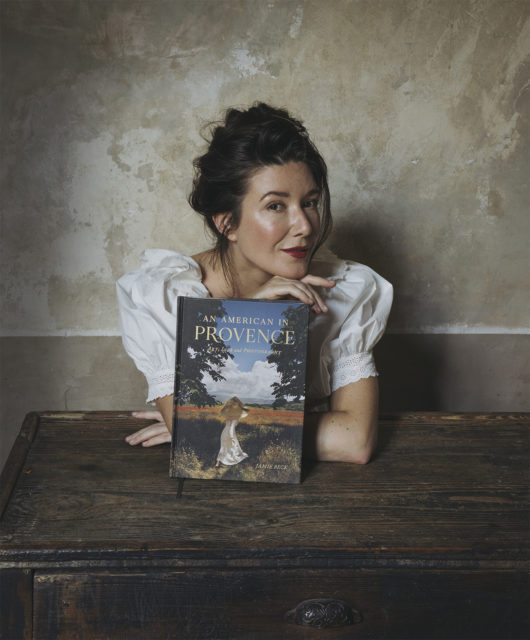 Jamie just published her first book, An American in Provence, which is described as a “beautiful collection of exquisite portrait, scenic, and still-life photography.” Jamie sent me an early copy a couple of months ago and I finished it in one sitting, clutching it as I moved from room to room. As soon as I set it down, my mom picked it up and devoured it with equal intensity and it sparked a series of really meaningful conversations about how we spend our days and what truly matters.
Jamie just published her first book, An American in Provence, which is described as a “beautiful collection of exquisite portrait, scenic, and still-life photography.” Jamie sent me an early copy a couple of months ago and I finished it in one sitting, clutching it as I moved from room to room. As soon as I set it down, my mom picked it up and devoured it with equal intensity and it sparked a series of really meaningful conversations about how we spend our days and what truly matters.
This book has quickly become one of my all-time favorites and I highly encourage you to order multiple copies, one for yourself and for gifting.
I was lucky enough to get the chance to interview Jamie for the blog about the book and her creative approach. Get ready to be inspired!
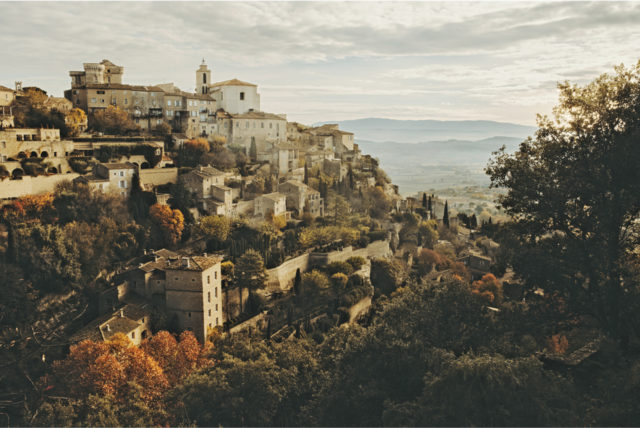 An American in Provence is absolutely overflowing with inspiration, from breathtaking photography to candid storytelling, seasonal French recipes, and expert photo tips. There is so much to take away that it’s hard to know where to start! How did this book come about?
An American in Provence is absolutely overflowing with inspiration, from breathtaking photography to candid storytelling, seasonal French recipes, and expert photo tips. There is so much to take away that it’s hard to know where to start! How did this book come about?
It all happened unintentionally if you can believe it! When I came to Provence I did not have goals in mind other than to just experience the culture and a different way of life that had captured my imagination. As I set out on my first year in Provence, I took notes in my journal of the observations I was experiencing, from the changing natural landscape to the provencal experiences of markets and how it felt struggling through a foreign language, what it was like living in a village 2,000 years old and without air conditioning, to the changes that begin to take place within me I had not expected to come from my year in Provence. I made these notes all the while photographing everything I was discovering. Eventually, the photographs became little visual stories of these lessons. This book, An American in Provence, is the culmination of these written lessons and visual art stories of what is now, the past six years living in Provence!
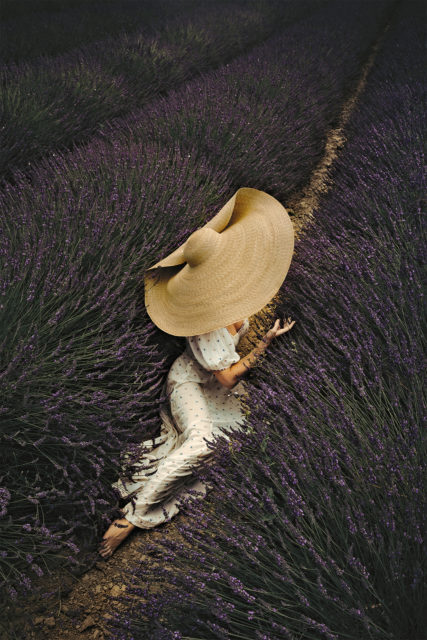 The book is organized by season, and reflects “a rhythmic cycle of life” you seem to have rediscovered in Provence. Can you talk more about the significance of reconnecting with nature?
The book is organized by season, and reflects “a rhythmic cycle of life” you seem to have rediscovered in Provence. Can you talk more about the significance of reconnecting with nature?
Nature in Provence is EVERYTHING. It is what gives us the unbelievably incredible food ingredients sold at local farmer’s markets, the flowers, the wine, the bees, and butterflies. It’s all completely connected here and surrounds you in a way that folds you in. When I moved to Provence I became bewitched by nature and the closer I looked, the more magical the discovery. But it’s not just the pleasure of witnessing life unfolding before you, but, the way it feels when you live harmoniously, seasonally, with it too. I found it, for me, to be a healthier way of life allowing each thing to have its moment; an ebb and flow. That way you appreciate what is good in the present and it leaves you with something always to miss, and in turn, always to look forward to.
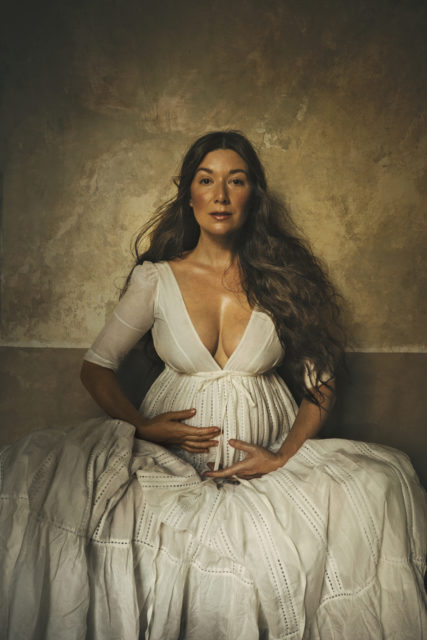 You thoughtfully share about listening to your gut and your decision to move from New York City to the French countryside and note that “by removing everything I knew, I allowed myself to live in each moment.” What about leaving a city in the U.S. and living in a small village in France has allowed you to embrace that?
You thoughtfully share about listening to your gut and your decision to move from New York City to the French countryside and note that “by removing everything I knew, I allowed myself to live in each moment.” What about leaving a city in the U.S. and living in a small village in France has allowed you to embrace that?
First and foremost, you have no choice but to be stripped of your routine. On my first Sunday in Provence I remember walking outside, hungry, ready to get some food … and there was literally NOTHING open. Thankfully I still had some leftover cheese and baguette from the previous day that I could eat and picked figs off the tree in my garden. France is not about being accommodating and certainly does not live to make money like the USA, which forces you (thankfully, and rightfully so) into their culture. I came because I wanted to experience their culture but I didn’t know I would also have to participate in it! It’s funny now to say that, but I think as Americans we just assume access to everything all the time because that’s what we know. France is always and only just being France, which forces you into a way of life foreign to you and you have no choice but to embrace it—which is a wonderful thing! When you “give in” to another culture, it really feels like being a little kid again, having to learn all over how to act, what to do, and how to survive. You have no choice but to be present in each moment and each moment feels so monumental because it’s laced with discovery and survival!
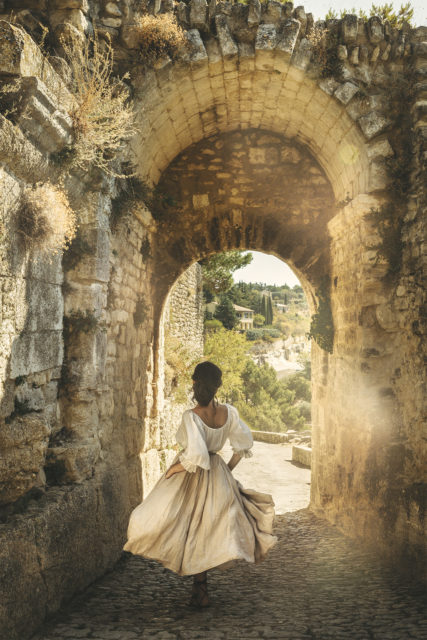 You were able to discover so much about yourself and how to feed your passion after moving, but you share that “Your own artist’s journey can happen anywhere, at any time—you just have to show up and have courage.” What are some ways to encourage finding a bit of that Provençal magic and creating a life you love?
You were able to discover so much about yourself and how to feed your passion after moving, but you share that “Your own artist’s journey can happen anywhere, at any time—you just have to show up and have courage.” What are some ways to encourage finding a bit of that Provençal magic and creating a life you love?
It’s really simple, find what you love—whatever it is! Whatever you are into and just do that! Have the courage to focus solely on your passion. I feel as if we are taught that the things we are passionate about are our “hobbies” and not our “work,” which is why you need to have the courage to say, “no, this is what I am into and THIS is what I want to focus my life on.” That can be anything! It’s really up to you to define. Define your life by your passions, not by what is expected of you, which you can do anywhere in the world, at any stage of life.
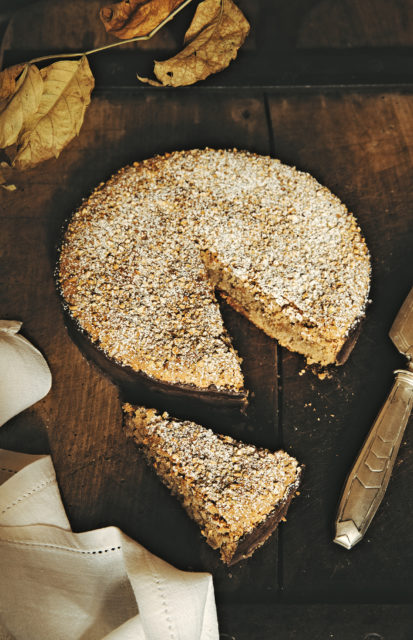 Your work so skillfully highlights the beauty in nature that is all around, from the “Terre de Lumière” of Provence to the seasonal food, flowers in every stage of life, and even bugs! You draw so much from the area you live in but I know you also have your own garden. What things do you enjoy growing yourself?
Your work so skillfully highlights the beauty in nature that is all around, from the “Terre de Lumière” of Provence to the seasonal food, flowers in every stage of life, and even bugs! You draw so much from the area you live in but I know you also have your own garden. What things do you enjoy growing yourself?
My garden is my second baby! The garden, which is a small interior garden (about 35 ft by 35 ft), is located in the center of the village and surrounded by old buildings. It has one stunning, large, fig tree that shades our old Provençal farm table. There is a bed of ancient lavender that grows in wild swirls like curly hair rather than the traditional manicured rows of stick-straight lavender. I have a lemon tree, a pergola of white wisteria vines, more than 17 different roses (a mix of climbing and shrub), a stunning section of hydrangeas that do surprisingly well, and a handful of mixed garden bed shrubs and flowers that I just planted. I can’t tell you the names because they are all in French and are wildly complicated to try to remember! I also have a collection of beautiful mixed herbs in terracotta pots: basil, rosemary, thyme, mint, etc. I’m not that interested in growing things to eat because the local farmers here have been doing that, organically, for so many generations. I would much rather eat what they produce!
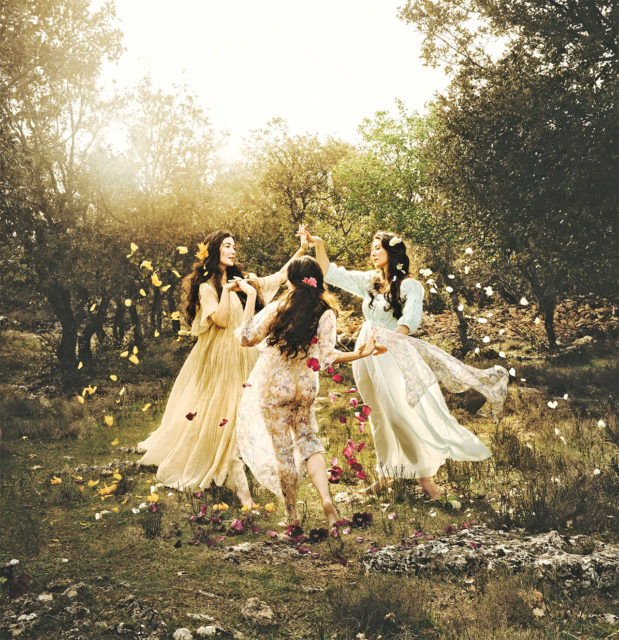 In An American in Provence, you talk about visual storytelling and “writing your photograph first.” You dive deep into some of the unique techniques you use, including combining multiple photographic plates and painting in detail. Can you give a general overview of the process to compose one of your photographs? I know one photo can sometimes take an entire day!
In An American in Provence, you talk about visual storytelling and “writing your photograph first.” You dive deep into some of the unique techniques you use, including combining multiple photographic plates and painting in detail. Can you give a general overview of the process to compose one of your photographs? I know one photo can sometimes take an entire day!
Some of my more ambitious projects have taken weeks to edit! However, for most posts, I create one photograph a day. Typically, I start with a concept. This can be wanting to capture what was at the market that morning or growing in the garden. Sometimes, as with my self-portraits, they are autobiographical based on a particular season of my life. I then forage for my subject matter and props, looking for what speaks to me and stirs emotion or excitement to create! I bring all these elements together, whether it’s in the studio or at a predetermined location outside, and begin to compose my photograph. There are many layers to my photographic process where I take multiple images I call “plates” and then composite them in post-production Photoshop. This allows me to build out compositions or create scenes that might not otherwise exist in real life, but hopefully, feels natural in the final result. There are also days when I don’t have a subject or concept in mind but rather let the day unfold around me until that moment of inspiration presents itself. The easiest way to find myself in that state is to simply take a walk through my village or in nature.
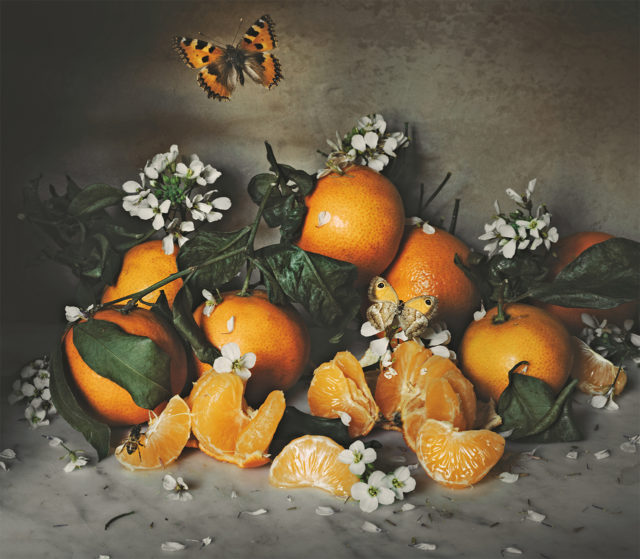 Your creations are so abundant and romantic—from the self-portraits to the Impressionist-style landscapes to those that look like 17th-century Dutch still-life paintings. It’s often hard to believe they are photos at all! Do you have a background in art? How did you find your way to this type of stylized photography?
Your creations are so abundant and romantic—from the self-portraits to the Impressionist-style landscapes to those that look like 17th-century Dutch still-life paintings. It’s often hard to believe they are photos at all! Do you have a background in art? How did you find your way to this type of stylized photography?
I have always been artistic and drawn to art. I’m also someone who sees art in everything—from a music video to the way someone dresses to the packaging of a product. Art is everywhere and art is always an option. I am always creating. Every detail of a day, like getting dressed, is a way for my mind to create a story. What is the character, what is she doing, what is her message today about life? When you look at Dutch still-life paintings, every object is placed with intention and carries a story, a meaning. I think we have become blind to the world around us, the mundane things we touch and interact with on a daily basis. In my work, I try to reexamine those objects and their place in our lives. That sort of approach is very connected to past art movements when people had less in general and objects carried great significance. As far as my photographic style, I really do feel as if I paint with the light, and it is that painting that I believe makes my photographs of another time yet completely relatable to every single person’s human experience.
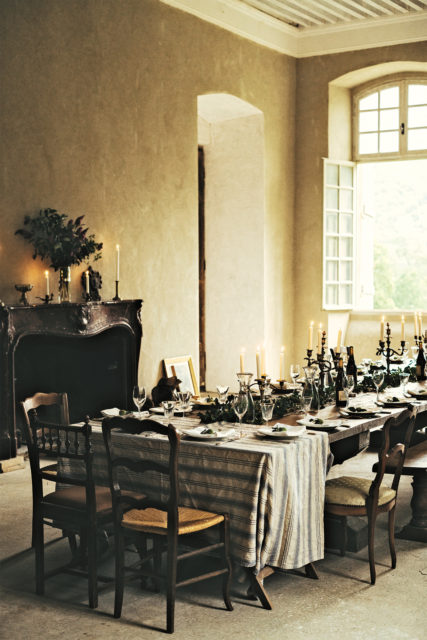 You generously share so many helpful photography and styling tips in your book. What would you say is most important to keep in mind when taking a photo of a natural landscape or capturing floral arrangements?
You generously share so many helpful photography and styling tips in your book. What would you say is most important to keep in mind when taking a photo of a natural landscape or capturing floral arrangements?
To have fun! I think we get caught up in the rules of photography and one must remember to always play. It’s when we are playing that we are enjoying and then, no matter the outcome, it was time well spent.
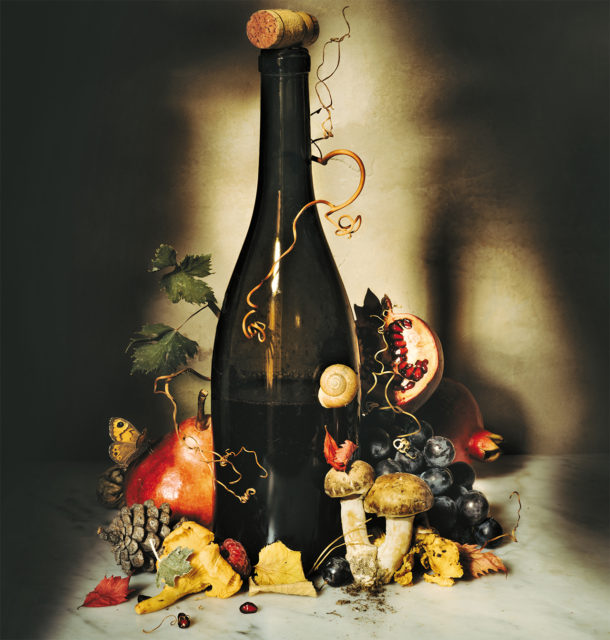 I loved the #IsolationCreation series you dreamed up and shared on Instagram during the lockdown where you created one piece of art a day, made prints from that work, and donated a portion of the proceeds to the Foundation for Contemporary Art’s Covid-19 Emergency Grants Fund. Can people still purchase your prints now?
I loved the #IsolationCreation series you dreamed up and shared on Instagram during the lockdown where you created one piece of art a day, made prints from that work, and donated a portion of the proceeds to the Foundation for Contemporary Art’s Covid-19 Emergency Grants Fund. Can people still purchase your prints now?
When we entered our lockdown in France it was not only a scary time because of what was happening in the world, but also because I couldn’t travel to do my commercial photographic work for the foreseeable future; which is how I made my living for the majority of my life. I couldn’t control what was happening outside but what I could do was create something positive every day—to share this experience we were all navigating through while also raising money to support other artists impacted by the pandemic. We retired the series earlier this year to make space on the website for new photographic works where I have available posters, prints, fine art, floral paperweights, nightgowns, and a beautiful stationery series handmade in Provence.
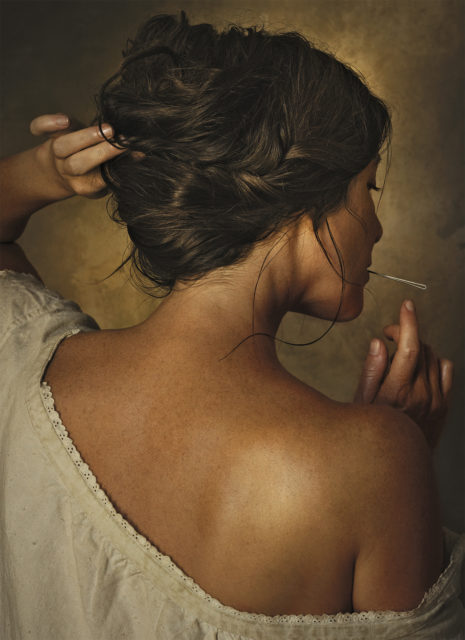 Will you talk about the impact you’ve felt since Instagram began to prioritize videos and Reels over images? Do you see artists and creators shifting to another platform to share their work?
Will you talk about the impact you’ve felt since Instagram began to prioritize videos and Reels over images? Do you see artists and creators shifting to another platform to share their work?
This has been really a tough transition as a photographer. My love is for the still image and Instagram has been a champion of the artful up until recently. It is a sentiment a lot of photographers, painters, and writers have had in conversation with me—that our work is what we want to share, and having to shift focus to animating that in order for people to see our posts not only adds another layer to the job but is not the job we want! I think the community of Instagram did a great job having our voices be heard about what we want, and for the moment they have listened. It’s not a surprise that social media is moving to video content, I think analysts have been saying this for a decade. The problem is in the algorithm that made us feel forced instead of inspired. With that said, being creative is also about adaptation and sometimes great things are born out of forced or constrained circumstances. Photography by its very nature based on technology and from its birth has been in constant evolution, so we must be too.
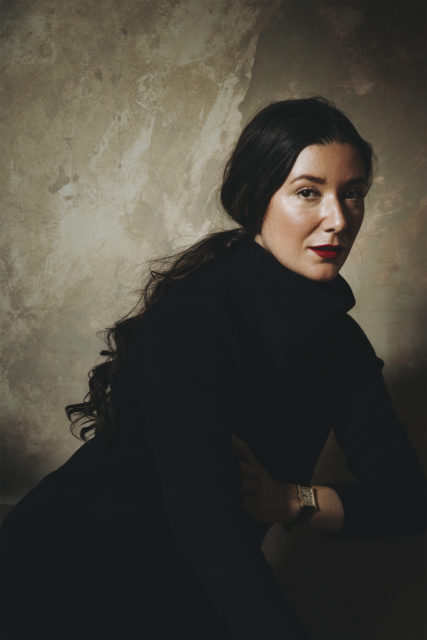 Between your photography projects, a new book, an online shop, and your beautiful Luxe Provence clothing collaboration, it seems like you’ve been busy! Are you working on anything new right now or enjoying a period of rest?
Between your photography projects, a new book, an online shop, and your beautiful Luxe Provence clothing collaboration, it seems like you’ve been busy! Are you working on anything new right now or enjoying a period of rest?
Kevin, my husband, and I always laugh when I say, “Next year I’ll rest,” and then next year never comes because there are just too many wonderful things to try to do in life and such little time! I absolutely love challenging myself, but even more than that, I love learning.
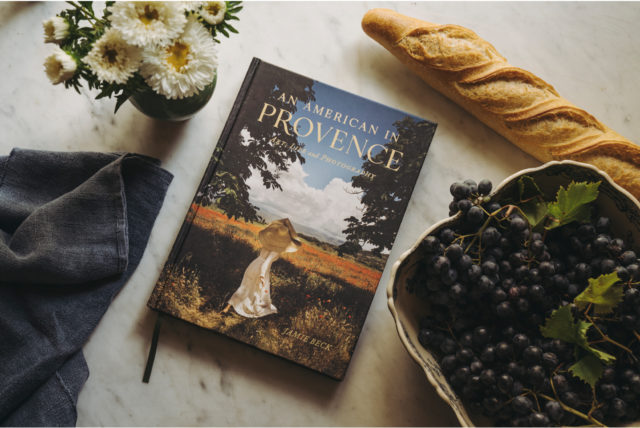
Thank you so much, Jamie, for taking the time to share about your incredible book with Floret readers. It’s such a gift to the world!
To celebrate the release of Jamie’s new book, An American in Provence, we’re giving away five copies.
For a chance to win, please post a comment below telling us if you were untethered from all responsibilities, where you would go, and what curiosity would you follow? Winners will be announced on Tuesday, November 15.
Update: A big congratulations to our winners Kate Riley, Cam Roberts, Charina Cabanayan, Kristina and Susan!
Learn more and connect with Jamie:
Please note: If your comment doesn’t show up right away, sit tight; we have a spam filter that requires we approve comments before they are published.
Floret only lists companies and products that we love, use, and recommend. All opinions expressed here are our own and Floret does not offer sponsored content or accept money for editorial reviews. If you buy something using the retail links in this post, Floret may receive a small commission. Thank you for your support!

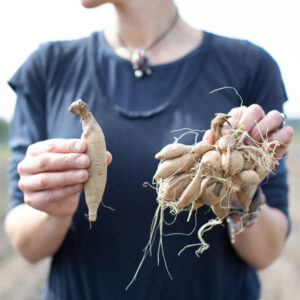

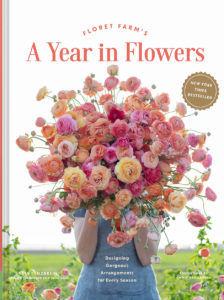
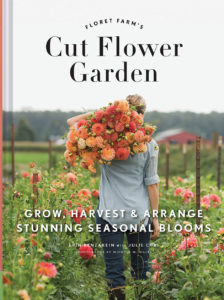


Mary Genevieve Schlotter on
I have just finished Jamie’s book.
I’m 68. It has transformed me. I could write a book on how I found peace during a stressful time in my life through escaping to a world I have always wanted to see in her stunning photos, words and recipes .